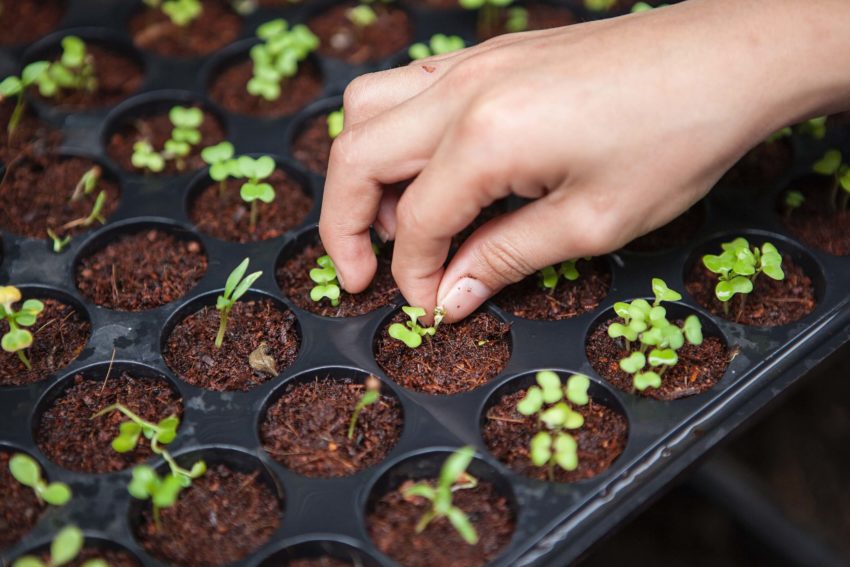Sustainability on College Campuses
Updated: December 8, 2023
Published: March 8, 2020

As a person living on Earth, you have an active stake in the environment and overall climate. Even more so, you can create positive change and help to minimize harm to the world. Sustainability in general, as well as sustainability on college campuses, can have a grand impact on the overall state of Earth and human’s ability to survive and thrive over time.
Before understanding the things you can do to assist in protecting mother nature, it’s important to understand exactly what climate change is.
Why should you care? Keep reading to find out! And then maybe even try your hand at some of the suggested initiatives.
What is Climate Change?
There’s a difference between weather and climate. The weather is the temperature you can see outside. It has to do with the degrees and conditions, like rain, sun, and snow. On the other hand, climate is the broader condition, or average weather patterns in a given place over a defined period of time.
Climate change isn’t a change that happens in a moment or over a day. But rather, it’s noticeable by comparing weather patterns, or the climate in a particular place, against its history. For example, if a location is used to experiencing 3 inches of rain in a given month, but the next year, it experiences 10 inches of rain in that same period, then the climate has very much changed.
While there are natural reasons for the climate to change, like the Sun moving closer to the Earth, scientists have shown that humans are greatly impacting and straining the climate. However, there are major contributors to climate change that humans have control over. The biggest culprit is the burning of fossil fuels. Fossil fuels are used for: electricity, transportation, heat production, manufacturing, and more.
Reasons You Need to Care
As an inhabitant on Earth, climate change has real and measurable effects on how you live. Climate change affects many important aspects of survival, including:
1. Decreased Food Supply:
The productivity of crops and harvests are affected by the climate. As productivity drops, the food supply drops.
2. Increased Costs:
Going hand-in-hand with decreased food supply is increased costs. This is simple economics. When supply is low but demand is unchanged or high, then costs have to rise.
3. Drought:
Climate change has caused dry conditions, leading to decreased rainfall which has resulted in droughts in many places, including California and Cape Town. With limited rainfall, there is a shortage of water supply. Not only does this impact drinking water, but it also means that agriculture and many businesses face challenges to function properly.
4. Forest Fires:
With a lack of moisture and dry conditions, forest fires are more likely. This has been recently witnessed in both the Amazon and Australia, where fires have decimated so much of the natural landscape and endanger people and animals.
5. Diseases:
When the atmospheric temperature rises, it causes snow caps to melt, which leads to higher water levels. This can spur the rise of insect-borne diseases like Zika virus which is spread by mosquitoes (who reside near still water).
6. Extreme Weather Conditions:
Because the atmosphere is experiencing abnormal conditions, weather patterns become unpredictable and extreme.
7. Loss of Coral Reefs:
When the atmosphere warms and water experiences temperature changes, natural habitats in the oceans and seas struggle to survive. This is happening in the Great Barrier Reef and other coral reefs globally that are unable to adapt to the changing conditions.
Photo by Chelsea on Unsplash
The Meaning of “Going Green”
Going green refers to sustainability efforts that focus on the small details. While “going green” has been a trending statement to use, it requires the insight and knowledge to know what you can do to make a difference.
By adopting everyday changes, one person can make a lifetime of differences. Let’s take a look at how colleges and individuals are achieving methods to go green.
Why Campuses are Going Green
For the most part, the best way to solve a problem is to first become educated about it. College campuses across the globe are becoming breeding grounds for novel solutions and small changes to positively impact the world.
The approach is both top-down and grassroots, with students promoting and urging campuses to take measures to reduce their carbon footprint. As such, there are many environmental projects for college students.
Photo by Joshua Lanzarini on Unsplash
How Campuses Can Measure Sustainability
Here are some of the ways in which both students and campuses can work together to go green:
1. Housing:
On traditional college campuses, some dorms and apartments are being built to support sustainability. For example, the use of solar panels, passive lighting, and reclaimed wood are just a few initiatives that are literally and figuratively changing the landscape.
2. Environmental Degrees:
Students can enroll in programs dedicated to these efforts by studying subjects like Environmental Humanities or Environmental Science.
3. Sustainable Curriculum:
Even if you don’t feel like majoring in one of the aforementioned areas, there are electives you can take to become more educated on the subject matter.
4. Green Buildings:
Organizations that govern infrastructure can provide ratings on how green a building is. LEED certification measures how environmentally friendly a building is. This is especially useful for students who attend online college to know, so that when they choose where to reside, they can be aware of the building’s status.
5. Alternative Transportation:
Ever think about how much waste transportation causes due to the gases being emitted into the environment? Simply walking from point A to point B or riding a bike helps lessen the emissions.
6. Shuttle:
For college students, you can take shuttles or carpool to get to campus to also help lessen the emissions and pollution.
7. Recycling and Composting:
So much waste can be reused and re-purposed, including scraps of food which can be used as compost for gardens and farms.
8. Refill Stations:
Rather than buying plastic water bottles, you can use a reusable water bottle and keep refilling it at refill stations. If your campus doesn’t have enough of these, urge administration to get on board!
9. Reimbursements:
One idea to reduce waste is to create an incentive program. For example, some campuses offer money back for students who bring their own reusable utensils or cups.
10. Organic Farming:
Campuses with a lot of space can start their own farms! That way, students can play an active role in growing their own food and decreasing the transportation costs/wastes of sourcing food.
11. Boycott Companies:
Companies that dispute climate change work against solving the problem and they help to spread misinformation. If you know a company is against making changes, stop supporting them.
12. Packaging and Bags:
Whenever possible, buy products with less packaging or reusable packaging. Every time you go to a store, have a reusable bag handy so that you don’t need to use a plastic or paper bag.
13. Water Usage Awareness:
When washing dishes, only keep the water on when you need it. Most people waste a lot of water and are unaware of how much they are wasting. Be mindful of your water usage by taking shorter showers, turn off the water while brushing your teeth, etc.
14. Shop Smart:
Buy organic and fair-trade products whenever possible. These companies support helping to reduce waste in the world.
15. Buy Second Hand:
There are many student groups and social groups that resell products. By buying second hand, you can reduce the waste it takes to create new products and still fulfill your needs!
16. Turn off Lights:
Electricity emits greenhouse gases. Get in the habit of turning off lights when you leave a room and turning off electronics that are not in use. Not only will this help to decrease your electricity bills, but it also will save a lot of electricity over time.
17. Consume Less Meat:
For some people, it’s easier to cut meat out of their diet, while others still love to savor the taste. However, the meat industry contributes a massive amount of harm to the environment, emitting 10-40 times more harmful gases into the environment than vegetable production. Cutting down even a little can have a positive effect.
Quick Facts
Source: Community for Accredited Online Schools
Project Ideas and Initiatives for College Students
Are you a current or soon-to-be college student? Regardless if you attend a traditional campus or study at an online university, you can play your part in helping achieve sustainability. The idea of “going green” is all about the small changes that can have a large effect.
Consider these initiatives and projects:
- Community garden
- Renewable energy
- Donation and recycling centers
- Recycling drives
- Donation programs in moving season
- Bike rental programs
- Go to environmental summits
- Plan long-term goals
Top 7 Greenest Universities
There are many schools who prioritize environmental issues on college campuses. According to the Association for the Advancement of Sustainability in Higher Education (AASHE), here are some of the highest ranking greenest universities:
1. Colorado State University
Located in Colorado and surrounded by nature, Colorado State University was the first college campus to have a solar heated and air conditioned building. It was also the first to be ranked platinum in the STARS rating system.
2. Stanford University
Almost half of all the food served on campus is organic and/or locally sourced. Plus, there are over 500 courses related to environmental sustainability offered.
3. Sterling College
More than 80% of the college will be powered by on-campus solar panels. The school also offers outdoors skill training and produces its own sustainable farmed food on-campus.
4. University of Connecticut
2.2 million square feet of infrastructure on campus is LEED certified and the school promotes environmental sustainability by running a competition to see which dorm can use the least water and energy per capita every month.
5. University of Washington
For students who want to get involved in sustainability efforts, they can choose from over 40 groups on campus with this intention.
6. Appalachian State University
The college offers certification in programs regarding the environment, and there are over 20 sustainability-focused degrees being offered.
7. Chatham University
20% of the dining hall’s food is locally produced and 90% of its energy is produced by wind.
Photo by Lisa Fotios from Pexels
Quick Ways to Be More Sustainable
On an individual level, there are some simple ways you can start being more sustainable today. Consider getting into the habit of the following:
1. Go digital – try to get study materials online and use e-books rather than textbooks
2. Recycle – all plastics, glass, paper, and aluminum
3. Limit water usage – even by a few minutes every time you shower, or by turning off the water while you scrub dishes and brush your teeth
4. Don’t buy bottled water – use refillable stations and a reusable bottle
5. Use reusable bags – carry a small reusable bag with you so when you stop by a store, you don’t need to use a plastic one
Sustainability Resources
Looking to get more involved in sustainability objectives? Here is a good list of resources and organizations to explore:
- Association for the Advancement of Sustainability in Higher Education
- Roots and Shoots
- Net Impact
- SustainUS
The Wrap Up
Regardless of who you are or where you live, you are an inhabitant of Earth. This means that every step you take, purchase you make, and action you do impacts the environment. The good news is that you have the power in your hands, literally and figuratively, to make better decisions and reduce your carbon footprint.
There are colleges, students, government organizations, and more that are totally dedicated to this cause. At the University of the People, our online education model means that we eliminate all the waste involved in running a college campus. Instead, we empower our students to access their education online and encourage environmental awareness as such.
Get involved a little, get involved a lot — whatever you choose to do, you can be part of the positive change the world needs to survive climate change!




